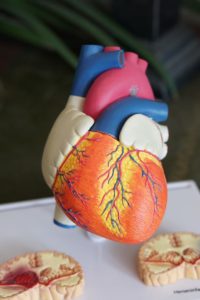A look Inside the Cath Lab
Non-invasive cardiac testing gives cardiologists valuable information about the heart muscle, arteries, and valves, but sometimes these results are inconclusive or don’t give enough information to guide treatment.

Often the next step is to schedule a closer look at the heart’s structure and function in the catheterization lab, usually referred to as the cath lab. As doctors we prefer to schedule this test proactively, before a heart attack occurs, as part of diagnosing shortness of breath, unstable chest pain (angina) or other heart-related concerns that can be caused from narrowing of the arteries, a blockage or possibly another issue.
A heart catheterization is an outpatient procedure typically performed in a hospital setting. An interventional cardiologist guides a thin, flexible wire through the arteries that lead to the heart, then passes a long hollow thin tube, the catheter, over the wire. X-ray dye is injected into the heart arteries and diagnostic imaging equipment is used to take pictures of the cardiac system to determine how well the heart is working, and if there are blockages or narrowing of the arteries.
As with all invasive medical testing, risks are present, but there is more risk associated with not adequately treating a heart artery blockage. This is one reason we prefer that the procedure be planned electively, rather than waiting until a cardiac event that requires emergency attention occurs. A catheterization can be performed during an active myocardial infarction (heart attack), but the situation is much more urgent and carries more risk. Additionally, during an emergency cardiac event just the blockage causing the immediate distress is addressed, even if there are other less significant blockages that need to be treated.
In the past the groin artery has been the primary entry point for the catherization wire, but nowadays the interventional cardiologist often enters the arterial system radially through the wrist. This advancement is one example how catheterization technology has progressed in the past several years. The result is that there are fewer complications, including considerably less chance of bleeding at the entry point and a shorter recovery period.
An interventional cardiologist is able to remove a blood clot and clear blockages through catheterization, angioplasty and stent placement, which has reduced the overall need for open heart by-pass surgery.
Stent technology has evolved significantly since becoming available as a treatment for a narrowed or blocked artery, too. The first generation of stents were not coated with medicine to prevent the body from treating it as a foreign object. As a result, a high percentage of patients experienced restenosis – or a recurrence of a blockage in the stented artery. Today, most stents are coated with an anti-cancer medication that discourages restenosis and the results are excellent.
But intervening with a stent is only part of the picture. Medications that thin the blood, decrease inflammation and those that keep the blood platelets from sticking together also are prescribed after the procedure to keep blood flowing optimally through the cardiac system.
These resources allow interventional cardiologists to meet our goal of preventing heart damage and allowing a vigorous and active life with a minimally invasive procedure.
Coastal Cardiovascular Care physicians are available to discuss your heart health care concerns through telemedicine and in-office appointments. Dr. Richard Jacoby is a general and interventional board-certified cardiologist with Coastal Cardiovascular Care, 700 Garden View Court, Suite 204, Encinitas, CA 92024. For more information call 760-452-6334 or go to www.coastalcardio.com.
Location
700 Gardenview Court, Ste 204
Encinitas, CA 92024
Contact Us
(760) 452-6334
Hours
Office: By Appointment Only
Patient Portal
Access Here
